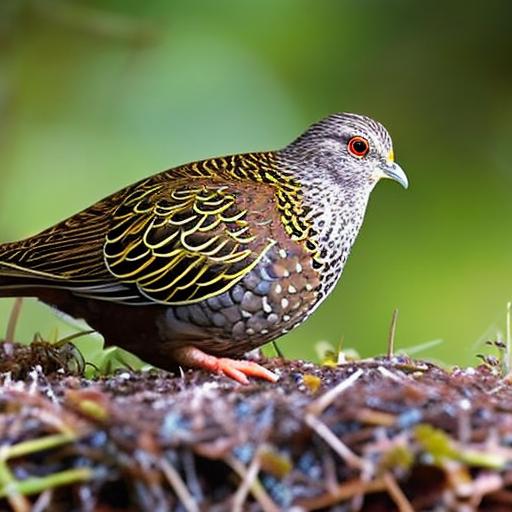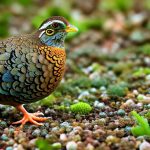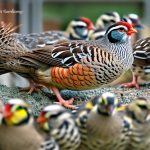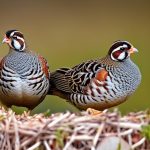When it comes to housing and enclosure for small animals such as hamsters, it’s important to provide a safe and comfortable environment that meets their specific needs. A suitable enclosure for a hamster should be spacious enough to allow for natural behaviors such as burrowing and exploring. A minimum of 360 square inches of floor space is recommended for a single hamster, with larger enclosures being even better. It’s important to choose an enclosure with a solid bottom to prevent injury and to provide a secure lid to prevent escape.
In addition to size, the type of enclosure is also important. Glass aquariums, plastic modular cages, and wire cages are all popular options. Each has its own advantages and disadvantages, so it’s important to consider the specific needs of your hamster when choosing an enclosure. For example, wire cages provide good ventilation but may not be suitable for hamsters with small feet as they can get caught in the wires. On the other hand, glass aquariums provide good visibility but may not offer enough ventilation. It’s important to consider the specific needs of your hamster when choosing an enclosure.
Key Takeaways
- Proper housing and enclosure is essential for the well-being of the animal, providing adequate space, temperature, and hiding spots.
- A balanced diet and nutrition plan is crucial for the overall health and longevity of the animal, including a variety of fresh foods and supplements.
- Socialization and enrichment activities are important for mental stimulation and preventing boredom, including interaction with other animals and providing toys and activities.
- Regular health check-ups and vaccinations are necessary to ensure the animal’s well-being, along with a clean and hygienic living environment.
- Responsible breeding and reproduction practices should be followed, including genetic testing and proper care for pregnant and nursing animals.
- Gentle and proper handling is important for the animal’s well-being, including regular grooming and monitoring for any signs of stress or discomfort.
- Common mistakes to avoid include inadequate housing, poor diet, lack of socialization, neglecting health care, irresponsible breeding, and rough handling.
Diet and Nutrition
Proper diet and nutrition are essential for the health and well-being of hamsters. A balanced diet for a hamster should consist of a high-quality commercial hamster food as the main component. This food should be supplemented with fresh fruits, vegetables, and occasional treats such as nuts or seeds. It’s important to avoid feeding your hamster sugary or fatty treats, as these can lead to obesity and other health problems.
In addition to providing a balanced diet, it’s important to ensure that your hamster has access to fresh water at all times. Water should be provided in a sipper bottle or a shallow dish that is securely attached to the enclosure to prevent spills. It’s important to monitor your hamster’s food and water intake to ensure that they are eating and drinking enough. If you notice any changes in their eating or drinking habits, it’s important to consult with a veterinarian to rule out any underlying health issues.
Socialization and Enrichment
Hamsters are social animals that benefit from regular interaction and enrichment. It’s important to spend time with your hamster each day to help them feel comfortable and secure in their environment. This can include gentle handling, talking to them, and providing opportunities for them to explore outside of their enclosure in a safe and supervised manner.
In addition to socialization, it’s important to provide enrichment activities to keep your hamster mentally and physically stimulated. This can include providing toys such as exercise wheels, tunnels, and chew toys, as well as creating opportunities for them to forage for food. It’s important to rotate their toys and provide new ones regularly to prevent boredom.
Health and Wellness
Maintaining the health and wellness of your hamster is essential for their overall well-being. Regular veterinary check-ups are important to monitor their health and address any potential issues early on. In addition to regular check-ups, it’s important to monitor your hamster for any signs of illness or injury, such as changes in appetite, activity level, or appearance.
It’s also important to keep their enclosure clean and free from hazards that could pose a risk to their health. This includes regularly cleaning their bedding, providing fresh water, and removing any uneaten food to prevent mold or bacteria growth. It’s also important to monitor their dental health by providing chew toys and inspecting their teeth regularly for signs of overgrowth or other issues.
Breeding and Reproduction
Breeding hamsters should only be done by experienced breeders who understand the responsibilities and potential risks involved. It’s important to carefully consider the genetics and health of the parent hamsters before breeding to ensure the health and well-being of the offspring. Additionally, it’s important to have a plan in place for finding suitable homes for the offspring before breeding takes place.
If you do not have experience with breeding hamsters, it’s important to spay or neuter your pet to prevent unwanted litters. This can help prevent overpopulation and reduce the risk of health issues associated with breeding.
Handling and Care

Proper handling and care are essential for the well-being of your hamster. When handling your hamster, it’s important to approach them gently and calmly to avoid causing stress or injury. It’s important to support their body with both hands and avoid picking them up by their tail, as this can cause injury.
In addition to handling, it’s important to provide proper care for your hamster by keeping their enclosure clean, providing a balanced diet, and monitoring their health regularly. It’s also important to provide opportunities for exercise and mental stimulation through enrichment activities such as toys and foraging opportunities.
Common Mistakes to Avoid
There are several common mistakes that hamster owners should avoid to ensure the health and well-being of their pets. One common mistake is providing an enclosure that is too small or lacks proper ventilation, which can lead to stress and respiratory issues. Another common mistake is feeding an unbalanced diet that lacks essential nutrients, which can lead to health problems such as obesity or dental issues.
It’s also important to avoid using unsafe bedding materials such as cedar or pine shavings, which can release harmful chemicals and cause respiratory issues. Additionally, it’s important to avoid using exercise wheels with rungs that are too wide or wire flooring that can cause injury to their feet.
In conclusion, providing proper housing and enclosure, diet and nutrition, socialization and enrichment, health and wellness, breeding and reproduction, handling and care, while avoiding common mistakes are essential for the health and well-being of hamsters. By understanding their specific needs and providing a suitable environment, you can help ensure that your hamster lives a happy and healthy life.
If you’re looking for tips on how to keep button quail, you might also be interested in learning about the importance of the right coop for your poultry. Check out this article on choosing the right size for your chicken coop door to ensure the comfort and safety of your feathered friends. Understanding the specific needs of your birds and providing them with a suitable living environment is essential for their well-being.
FAQs
What are button quail?
Button quail, also known as Chinese painted quail, are small ground-dwelling birds native to Southeast Asia. They are popular as pets due to their small size and colorful plumage.
What do button quail eat?
Button quail are omnivorous and eat a variety of foods including seeds, insects, and small plants. In captivity, they can be fed a diet of commercial game bird feed, supplemented with fresh fruits and vegetables.
How do you house button quail?
Button quail should be housed in a spacious enclosure with plenty of room to move around. The enclosure should have a solid floor to prevent injury to their delicate feet. It is also important to provide hiding spots and places to perch.
What are the temperature and humidity requirements for button quail?
Button quail thrive in temperatures between 70-80°F (21-27°C) and require a humidity level of around 60-70%. It is important to provide a heat source and monitor the humidity levels in their enclosure.
How do you care for button quail chicks?
Button quail chicks require a warm, draft-free environment and should be provided with a high-protein diet to support their growth. It is important to monitor their health and provide proper care to ensure their well-being.
Meet Walter, the feathered-friend fanatic of Florida! Nestled in the sunshine state, Walter struts through life with his feathered companions, clucking his way to happiness. With a coop that’s fancier than a five-star hotel, he’s the Don Juan of the chicken world. When he’s not teaching his hens to do the cha-cha, you’ll find him in a heated debate with his prized rooster, Sir Clucks-a-Lot. Walter’s poultry passion is no yolk; he’s the sunny-side-up guy you never knew you needed in your flock of friends!







